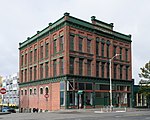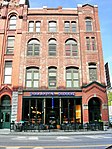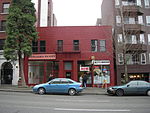The Art Institute of Seattle

The Art Institute of Seattle was a for-profit art and culinary school in Seattle, Washington. The school was one of a number of Art Institutes, a franchise of for-profit art colleges with many branches in North America, owned and operated by Education Management Corporation. EDMC owned the college from 1982 until 2017, when, facing significant financial problems and declining enrollment, the company sold the Art Institute of Seattle, along with 30 other Art Institute schools, to Dream Center Education, a Los Angeles-based Pentecostal organization.The Dream Center Foundation acquired the school in 2018 and laid off ten of its thirteen full-time teachers in October 2018. The Washington Student Achievement Council then suspended Ai-Seattle's license to operate, which blocked enrollment of new students.The school closed permanently on March 8, 2019, with 650 students unable to finish the winter quarter. Students were forced to retrieve paper copies of their documents during the last day and were offered scholarships and classes from other nearby universities, including Seattle Pacific University.
Excerpt from the Wikipedia article The Art Institute of Seattle (License: CC BY-SA 3.0, Authors, Images).The Art Institute of Seattle
Bell Street, Seattle Belltown
Geographical coordinates (GPS) Address Nearby Places Show on map
Geographical coordinates (GPS)
| Latitude | Longitude |
|---|---|
| N 47.612 ° | E -122.3487 ° |
Address
Bell Street 1
98121 Seattle, Belltown
Washington, United States
Open on Google Maps








